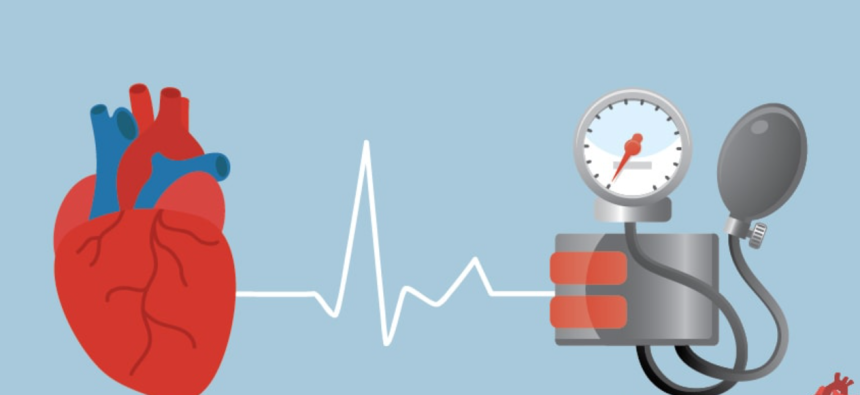High blood pressure is one of the most common medical conditions out there — if not properly supervised, it can lead to serious health problems. According to the CDC, nearly half of the adults residing in the United States suffer from hypertension, that’s about 116 million. Remote patient monitoring is a sure-fire, easy way to track and manage blood pressure with the use of technology.
Hypertension or high blood pressure – a serious health issue that must be monitored.
Hypertension or high blood pressure is a critical health issue that must be monitored. It is a condition that occurs when your blood pressure is higher than normal. It usually develops gradually, often goes unnoticed for some time and it can lead to heart disease, stroke and kidney failure. Therefore, it is important to know the signs of hypertension and act accordingly.
What are the most common symptoms of hypertension?
- Headaches that won’t go away even after taking an aspirin
- Nausea
- Vomiting
- Blurred vision
- Dizziness
- Fainting
- Chest pain or pressure
- Decreased urination
- Ringing in your ears
- Fatigue
- Nosebleeds
- Shortness of breath
Many people are unaware of the importance of managing their blood pressure. They may not know what the symptoms are, or they may be ignorant on what to do if they happen to stumble upon them. Some of the barriers to adequate blood pressure management include:
– Lack of awareness about the importance and symptoms of high blood pressure.
– Lack of information about how to manage high blood-pressure or the consequences if they do not.
– Inadequate access to healthcare providers and/or medications.
– Lack of financial resources.
– Medication cost and side effects.
– Social and economic factors such as poverty due to a lack of access to fresh produce or healthy food which leads to an unhealthy lifestyle.
– Lack of motivation to get treatment.
– Masked hypertension in which patients appear to have a normal BP in the office, but high BP at home.
What is remote patient monitoring for hypertension and how to use it?
Remote patient monitoring or telemonitoring is a service that allows patients to supervise their health remotely through their phones or other mobile devices. Patients can use it to track their blood pressure, heart rate, weight and other health indicators. It is a new healthcare method to monitor and manage patients with chronic diseases like hypertension.
Remote patient monitoring is a great way for patients to keep track of their health data and send it to their physician for follow-up care without constantly visiting a hospital or a doctor’s office. It also makes it easier for doctors because they can get feedback from patients before making appointments — helping them be more efficient and reducing time spent meeting with each patient.
Using remote patient monitoring devices for blood pressure
While using your remote blood pressure monitoring, it’s findings will be shown on the main device and in a companion smartphone app.
Two numbers are used to represent the measurement: your systolic blood pressure is at the top and your diastolic blood pressure is shown at the bottom. The 90/60 to 120/80 mmHg range is considered to be the normal range.
Follow the step-by-step guide given below on how to use your remote patient monitoring blood pressure equipment to achieve the best readings:
Measure your blood pressure twice a day:
- Your first measurement should be done in the morning after going to the bathroom and before you eat, exercise, drink caffeine, or take any medication.
- Your second, at night and before supper or at the most 30 minutes after consuming food, drink, caffeine, or cigarettes.
Get comfortable: sit on a back-supported chair with your legs extended and your feet flat on the floor.
Position your arm comfortably — use the same arm every time you take your blood pressure. Your upper arm should be at heart level while you rest it. Place the cuff wrapped firmly directly above the bend in the elbow of your arm, but not too tight.
Sit quietly — Take five minutes to relax.
Take two or three readings: if your gadget doesn’t capture your results instantly, leave the cuff in place deflated, wait a minute or two, and then take another reading. Repeat this procedure three times if necessary and then average the results. Your blood pressure should be around five points lower at home than it should be at the doctor’s office.
The role of remote patient monitoring for blood pressure management
Blood pressure readings can be routinely recorded, using remote patient monitoring.
Through the use of remote patient monitoring devices for blood pressure, patients can change their behavior when it comes to treatment and they can build a reliable measurement technique. As for providers, they can receive real-time alerts when a patient’s blood pressure reading ranges out of the recommended metrics. When notified, the practitioner can get in touch with the patient to diagnose why the alteration took place and inform their patient what needs to be done to get the blood pressure under control.
How can remote patient monitoring for blood pressure help?
Remote patient monitoring devices for blood pressure can help by:
Bluetooth biometric monitoring: patients can record their blood pressure, as recommended by their doctor, throughout the day.
Medication reminders: it helps patients to follow their medication plans with both new and existing prescriptions as prescribed by the doctor.
Symptoms surveys: assists the doctors in better understanding the patterns behind changes in blood pressure and other symptoms.
Education modules: through hypertension-specific instructions, patients can learn how to manage their blood pressure at home and what steps to take to improve outcomes.
Virtual visits: if a patient’s blood pressure reading is abnormal, their symptoms are becoming worse, or they just have a question about their care plan, the patient and the clinician can reach out to each other in real-time.
Benefits of remote patient monitoring for blood pressure management
Remote hypertension management can provide patients with better care. The benefits of remote patient monitoring for blood pressure management include:
- Improved patient compliance
- Reduced hospitalization rates
- Reduced mortality rates
- Increased quality of life
- Increased productivity
- Enhanced hospital care
- No added cost
Choosing the right remote patient monitoring solution for hypertension
There are many remote patient monitoring solutions available for hypertension, but it is important to choose the one that best suits your needs and circumstances.
It’s important to consider the following:
- Connectivity: Bluetooth, Wireless WiFi, 4g or 5G.
- User friendly interface/application.
- Continuous access to health data.
- AI powered analytics.
- Level of comfort when wearing the device.















